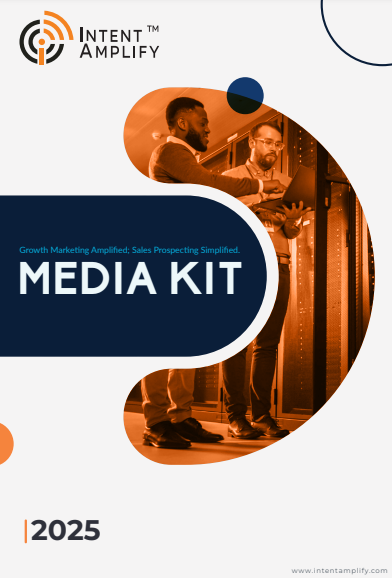
Personalizing ABM Campaigns for CFOs and Finance Leaders: Tactics That Convert
- Last updated on: June 30, 2025
Let’s get real for a moment. CFOs are the ultimate skeptics in the room. They don’t care how flashy your tech is or how creative your pitch sounds. If your offer doesn’t tie directly to business value – or more specifically, financial value – you’re unlikely to get a second glance. Account-based marketing (ABM) isn’t about casting a wide net. It’s about crafting personalized, timely, and ROI-centric conversations that speak directly to the priorities of decision-makers. And when your target is the Chief Financial Officer, it’s game on. So, how do you break through the noise and land on their radar?
Here’s a clear, research-backed playbook on personalizing ABM for CFOs in 2025 – with tactics that don’t just engage, but convert.
Why Personalization Is Non-Negotiable for Finance Leaders
Let’s start with a stat that says it all: According to the 2025 Deloitte Global CFO Signals Report, 82% of CFOs admit they ignore marketing outreach unless it directly aligns with their current financial goals or compliance priorities. That’s not surprising. Their inbox is full of vendors pitching “efficiency” and “scale,” but light on numbers that matter.
CFOs want value that translates into real business outcomes:
- Cost containment
- Risk mitigation
- Better forecasting accuracy
- Regulatory readiness
So, if your messaging reads like it could’ve been sent to any department head, you’ve already lost the room.
What works?
Instead of saying, “We help companies improve workflows,” try:
“Our platform helped a logistics CFO reduce last-mile delivery OPEX by 18% in one quarter.”
See the difference? One sounds like an ad. The other sounds like a decision-maker’s next quarterly win.
Understand What’s Keeping CFOs Up at Night
Most ABM campaigns fail with CFOs because they misunderstand the mindset. While marketers might obsess over engagement, CFOs are wired differently. They think in terms of financial exposure, strategic investments, and risk-adjusted returns.
According to PwC’s 2025 CFO Pulse Survey, 74% of finance leaders are prioritizing investments that reduce operational risk and improve forecasting. So if your pitch doesn’t mention ROI models, compliance benefits, or payback timelines, rewrite it.
Here’s a quick check before you hit “send”:
- Does this help the CFO justify a spend to the board?
- Can it reduce regulatory exposure?
- Will it show up in next quarter’s numbers?
If the answer is no, it’s not CFO-ready.
Use Intent Data to Catch Them at the Right Moment
CFOs are smart. They don’t announce when they’re exploring solutions. Instead, they dig quietly – visiting ROI pages, downloading compliance reports, and scanning whitepapers.
This is where intent data becomes gold.
Tools like 6sense, Bombora, and G2 Buyer Intent allow your team to spot digital breadcrumbs that signal readiness to engage. If a CFO from a target account is reading your pricing or viewing your financial case studies, that’s not a coincidence. That’s a signal.
And when you respond with personalized outreach that addresses the exact topic they’ve been researching? You’re not interrupting. You’re adding value.
A Forrester 2025 study found that ABM campaigns using intent data saw 36% higher conversion rates when targeting financial executives.
Match Your Message to the CFOs Financial Stage
Here’s a nuance many miss: not all CFOs are focused on the same metrics.
A CFO at a Series B startup wants burn control and clean books. A CFO in a mid-market company is looking for vendor consolidation and systems integration. At the enterprise level, it’s all about governance, EBITDA, and global compliance.
Segment by financial lifecycle, not just firmographics.
| CFO Type | Key Priorities |
| Startup/Scale-Up | Burn rate, audit readiness, and fundraising metrics |
| Mid-Market | Cost visibility, tool consolidation, and automation |
| Enterprise | Risk mitigation, regulatory compliance, scenario modeling |
Tailor your ABM content to fit these financial narratives. A templated message just doesn’t do the trick.
Go Beyond Job Titles – Personalize Micro-Moments
It’s tempting to stop at a LinkedIn title and call it “personalized,” but real engagement happens when you understand contextual timing.
What are the micro-moments CFOs are navigating?
- End of the quarter? Help with performance visualization.
- Has new funding been lost? Offer benchmarks for growth-stage budgeting.
- Legislative changes? Provide expert commentary on how it may impact reporting.
This isn’t about gimmicks. It’s about showing up with exactly what they need – before they ask for it. According to the EY 2025 CFO Outlook, 69% of CFOs say they prefer vendors who offer proactive financial insight, not just tools.
Speak in Financial Fluency, Not Marketing Speak
You’ve heard this before: CFOs speak numbers. But there’s more to it. They speak about cost structures, EBITDA margins, and TCO.
Drop the “better, faster, smarter” fluff. Use:
- ROI in 6-month or 12-month timelines
- Projected impact on free cash flow
- Case studies with CFO quotes (not just client success teams)
- Graphs showing the payback curve and scenario models
When your deck can double as part of their board update, you’re no longer selling – you’re helping them look smart in the boardroom.
Focus on Building Financial Trust, Not Just Pipelines
You don’t close a CFO on the first touchpoint. But if your brand consistently helps them stay informed, reduce exposure, or prep for big decisions, trust builds naturally.
Consider sending:
- Quarterly market insight reports from analysts like Gartner or McKinsey.
- Executive summaries on upcoming compliance trends (think ESG, AI governance, tax reform)
- Invite-only virtual CFO roundtables with your product’s finance strategist
When you shift from selling a product to facilitating smart financial decision-making, CFOs don’t just notice. They champion.
Closing Thought: Treat CFOs as Strategic Catalysts
CFOs are not just gatekeepers of budgets, they’re drivers of enterprise transformation. Winning their trust means your solution doesn’t just land a deal. It lands in boardrooms, procurement, and long-term strategy.
So next time you draft an ABM message, ask:
“Does this help a CFO make a financially sound decision today?”
If the answer is yes, you’re no longer just marketing. You’re making an impact.
FAQs
- What content formats work best for CFOs in ABM campaigns?
CFOs value detailed, high-trust content like ROI calculators, cost-benefit case studies, compliance briefs, and industry-specific benchmarks. They prefer concise summaries with clear financial outcomes. - How can I identify when a CFO is in-market or researching?
Use intent data platforms like 6sense, Bombora, or G2 Buyer Intent. These tools reveal engagement with pricing pages, financial whitepapers, or peer reviews. - What are the common mistakes marketers make when targeting CFOs?
Overgeneralizing value propositions, ignoring financial lifecycle stages, and using vague language like “optimize operations.” CFOs expect ROI clarity and financial specificity. - Should I include pricing information early when marketing to CFOs?
Yes, but include it with context – total cost of ownership, payback period, and benchmarked savings. CFOs appreciate transparency backed by data. - How frequently should CFOs be engaged through ABM?
Prioritize quality over quantity. Deliver high-value insights quarterly or aligned with fiscal events. Over-messaging may backfire, but value-driven content builds trust.




